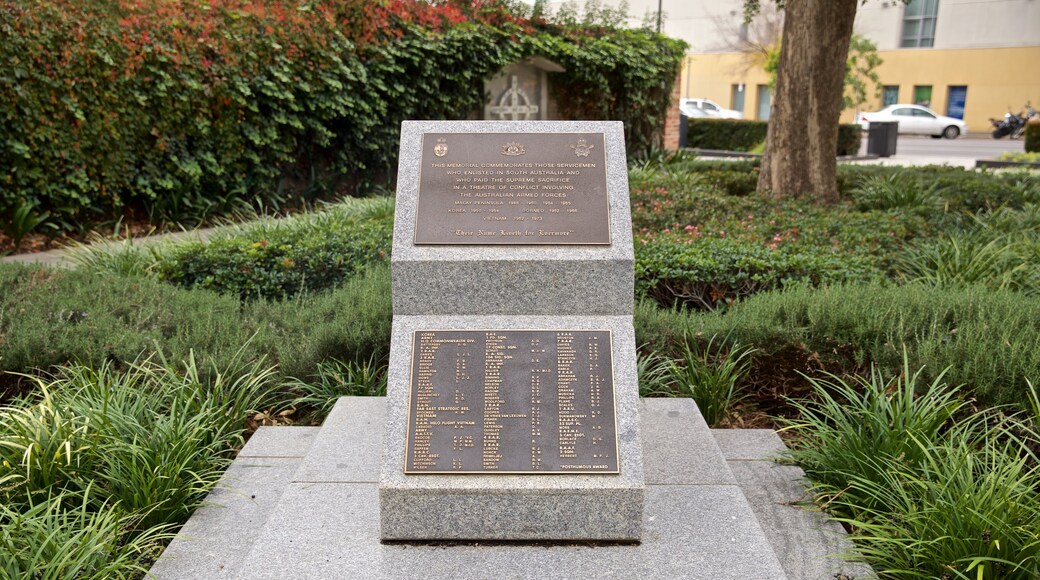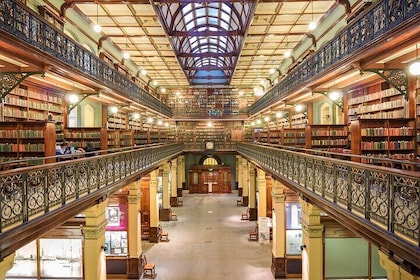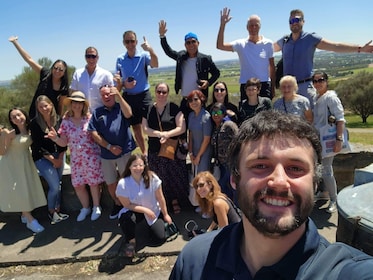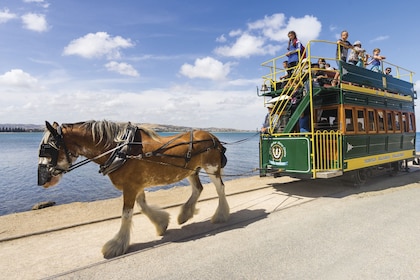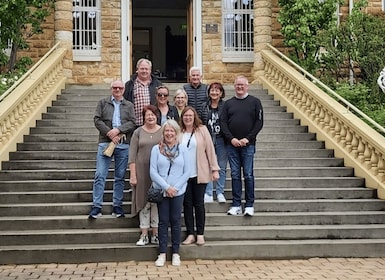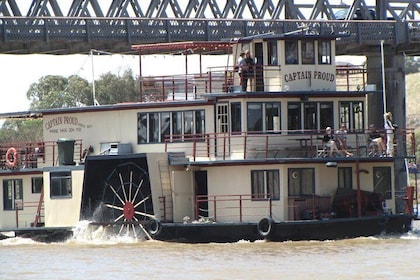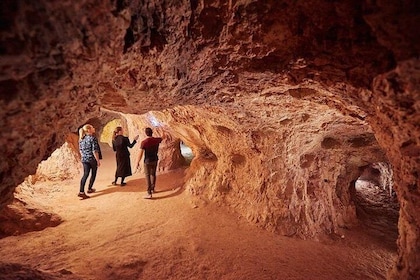Reflect on the legacies of war and learn about Australia’s military history at the National War Memorial (South Australia). The architecturally intriguing monument is a tranquil place to consider the sacrifice of those who gave their lives to defend the country.
Look for a huge arch resembling an outdoor grotto amid the city’s central parklands. Walk up the granite steps and examine the relief sculpture of a winged figure in white marble and the rugged arch of grey marble.
Walk around the monument to see its different sides. On the street-facing side, you’ll see a representation of the “Spirit of Duty” surrounded by bronze figures of a young woman, a scholar and a farmer. This symbolises the preface to war. Around the other side, see a different winged figure forlornly carrying a deceased soldier: the aftermath of the tragedy. Underneath, water drips from the mouth of a bronze lion.
Read the poetic inscriptions on the monument, which add to its emotional impact. The intention was to allow the sculpture to stand and proclaim its commemorative message. There is a small room inside the memorial that holds a shrine and important records.
Learn about the story behind this unique memorial. Its name, the National War Memorial (South Australia), commemorates all Australians who lost their lives in war, not just those from this state. South Australia was the first state to plan such a monument to the war’s victims in the wake of the worldwide tragedy. It took two architectural competitions to determine the eventual design. The memorial was finally unveiled in 1931, only 8 years before the next world war was to begin.
Around the National War Memorial (South Australia), you can discover smaller additional monuments that commemorate all the waves of conflict that came after World War I. The memorial is located in the city centre of Adelaide, nearby the University of Adelaide campus, the South Australian Museum, Government House Grounds and busy North Terrace.



